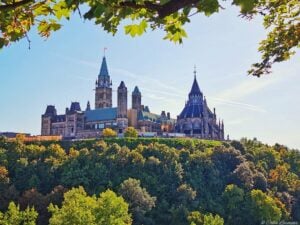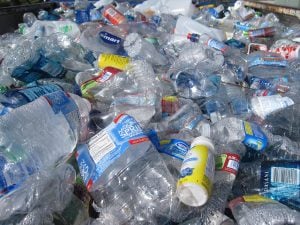On a gently sloping tract of land just outside of Vernon, B.C., Greg O’Neill is witnessing a life-and-death struggle for thousands — and has been hoping for death — all in the name of shielding one of the province’s most important industries from climate change.
“We wanted them to die,” says O’Neill, a research scientist with the province’s Ministry of Forests, Lands and Natural Resource Operations. “They are martyrs, sacrificed for science.”
The “martyrs” O’Neill is referring to are 3,200 seedlings that were planted at the Kalamalka Research Station three years ago, half of which have already succumbed to the Okanagan’s unforgiving climate of heat, cold and drought. The trees here are just one part of the province’s Assisted Migration Adaptation Trial, a sort of “Survivor” challenge for saplings, designed to push 15 of British Columbia’s most common forestry species to the limit to determine which conditions will give the trees the best chance to survive climate change.
Exposing the trees to the most extreme conditions, even those that O’Neill knows will kill them, is essential to what he calls “pinning the tails on the curve” and accurately graphing the range of their climatic tolerances.
The scale of the project is massive. Seeds have been provided by the US Forest Service and Canadian and American forestry companies, while test sites are located on Crown land in Canada, national forests in the United States and private land in both countries. Some 48 test sites stretch from the Yukon to southern Oregon, with nine in the United States and the rest in Canada. And because a Douglas fir from Prince George is not exactly the same as a Douglas fir from Vernon, O’Neill is testing seeds from 48 different sources. The timeline is protracted: the first results will come in 2014, and the project is expected to last for three decades.
Provenance trials such as this, where seed sources of a species are planted side by side in different locations, are standard in forestry, says University of British Columbia forest geneticist Sally Aitken. “But in terms of planting large scale — the number of species and the number of sites — this research is leading edge, and it’s being done specifically with climate change in mind, rather than retrofitting trials for that purpose.”
Climate change has already created what O’Neill calls “unhappy trees.” Warmer winters in recent years allowed the mountain pine beetle to flourish, which helped to facilitate an all-you-caneat buffet that gutted British Columbia forests. Over the past 15 years, the province has seen severe droughts, fires and coast of Alaska and British Columbia to climate change.
“Foresters are no longer planting just for today’s climate,” says O’Neill. “They’re planting for the climate 60 to 80 years from now that is expected to be three to four degrees warmer.”
The term “assisted migration” concerns detractors, who believe that moving trees will create invasive species. According to O’Neill, however, the ultimate aim is not to move trees far from home, but to determine nearby climatic conditions where they are most likely to thrive.
“Plants speak the language of climate more than geography,” says O’Neill. “But trees do get homesick. They don’t like being moved. They grow best in the environment of their ancestors.”




